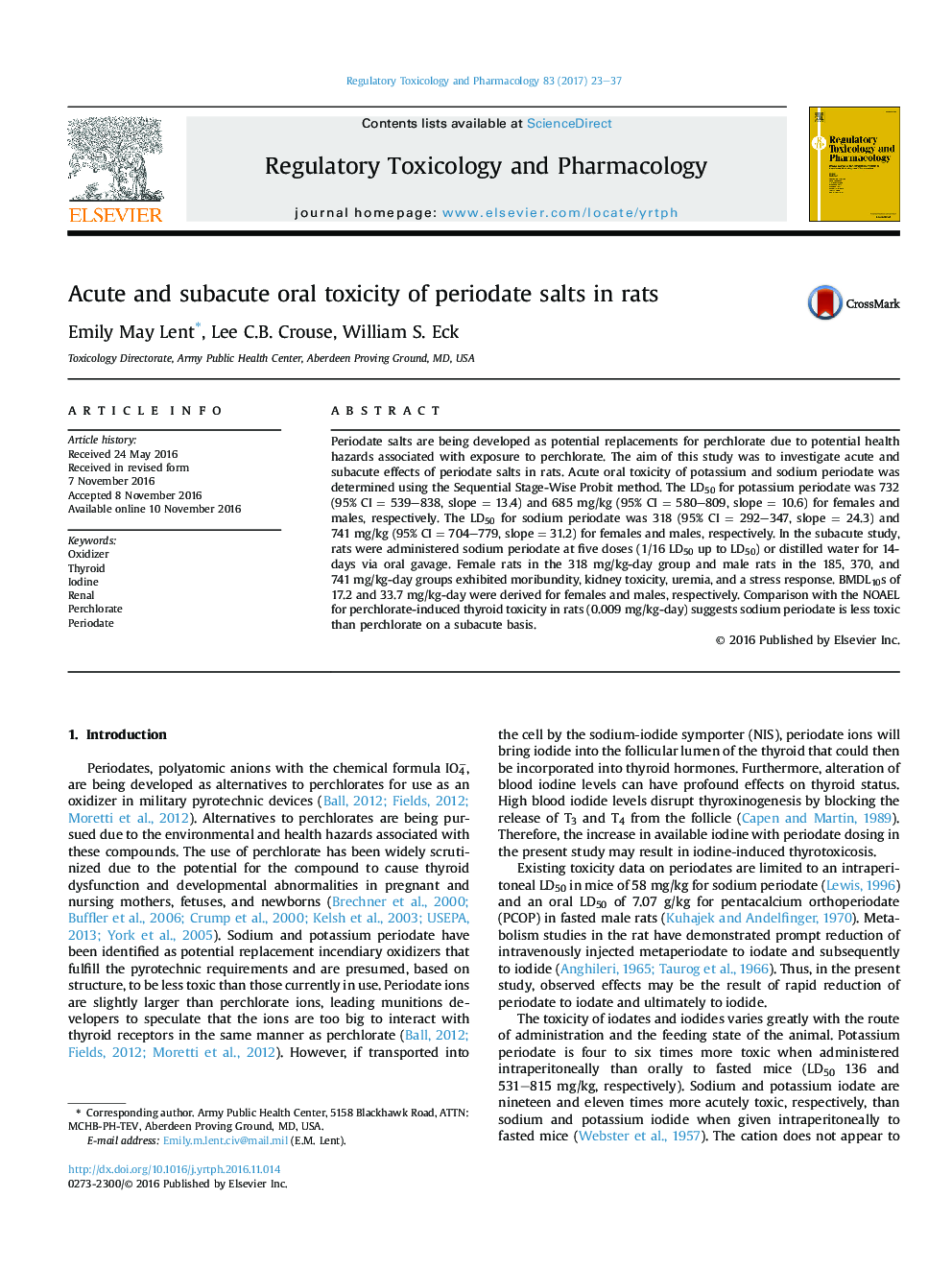| Article ID | Journal | Published Year | Pages | File Type |
|---|---|---|---|---|
| 5561224 | Regulatory Toxicology and Pharmacology | 2017 | 15 Pages |
Abstract
Periodate salts are being developed as potential replacements for perchlorate due to potential health hazards associated with exposure to perchlorate. The aim of this study was to investigate acute and subacute effects of periodate salts in rats. Acute oral toxicity of potassium and sodium periodate was determined using the Sequential Stage-Wise Probit method. The LD50 for potassium periodate was 732 (95% CI = 539-838, slope = 13.4) and 685 mg/kg (95% CI = 580-809, slope = 10.6) for females and males, respectively. The LD50 for sodium periodate was 318 (95% CI = 292-347, slope = 24.3) and 741 mg/kg (95% CI = 704-779, slope = 31.2) for females and males, respectively. In the subacute study, rats were administered sodium periodate at five doses (1/16 LD50 up to LD50) or distilled water for 14-days via oral gavage. Female rats in the 318 mg/kg-day group and male rats in the 185, 370, and 741 mg/kg-day groups exhibited moribundity, kidney toxicity, uremia, and a stress response. BMDL10s of 17.2 and 33.7 mg/kg-day were derived for females and males, respectively. Comparison with the NOAEL for perchlorate-induced thyroid toxicity in rats (0.009 mg/kg-day) suggests sodium periodate is less toxic than perchlorate on a subacute basis.
Related Topics
Life Sciences
Environmental Science
Health, Toxicology and Mutagenesis
Authors
Emily May Lent, Lee C.B. Crouse, William S. Eck,
